In January 10,000 Birds held a ‘Parrot Month’ theme (http://10000birds.com/tag/parrot-month), and I’m ashamed to admit one of the posts I didn’t get around to formatting – not because it wasn’t any good but because it was so long – was written by Nick Sly, erudite and learned author of the Biological Ramblings blog, who has also contributed two wonderful posts on his studies on Green-rumped Parrotlets in Venezuala (try Forpus passerinus and the Ornithologists of Masaguaral for instance).
I’ve been promising Nick for about a month now that I would format the post below and – of course – I’m glad that I now finally have because it’s really very good, and I apologise to Nick profusely as I know just how long this epic took him to write…
Anyway, it’s online now, so please enjoy (and, Nick, sorry again)
Parrot Bio-geography and Evolution
 Parrots are unique among birds with their deep, entangled relationship with humans. The majority of posts in January’s Parrot Month emphasize this relationship, from humanity’s disastrous impact on wild populations, the conservation efforts to save them, to parrot’s relationships with humans in captivity. Yet, there are also an astounding number of biological reasons to appreciate parrots. It is quite easy to appreciate the African Grey’s intelligence, the Rainbow Lorikeet’s Trichoglossus haematodus crazy mishmash of colors, and the Palm Cockatoo’s (photo right, source Wikipedia) awesome headgear.
Parrots are unique among birds with their deep, entangled relationship with humans. The majority of posts in January’s Parrot Month emphasize this relationship, from humanity’s disastrous impact on wild populations, the conservation efforts to save them, to parrot’s relationships with humans in captivity. Yet, there are also an astounding number of biological reasons to appreciate parrots. It is quite easy to appreciate the African Grey’s intelligence, the Rainbow Lorikeet’s Trichoglossus haematodus crazy mishmash of colors, and the Palm Cockatoo’s (photo right, source Wikipedia) awesome headgear.
Yet, we can go beyond the recognition of each parrot species’ unique and beautiful traits.
Harry Greene, herpetologist at Cornell University, likes to quote Immanuel Kant when speaking on the sublime in nature. Kant considers beauty to be a property of objects, whereas the sublime transcends the characteristics of the individual to encompass much more. Harry gives Kant a biological twist, speaking often in class of phylogenetic sublimity – that we should appreciate organisms not just for their individual beauty, but for all of the wonderful organic evolutionary processes that have shaped their history to the present day.
My purpose here is to give you another reason to appreciate parrots, an attempt to convince you that parrots are phylogenetically sublime. Here’s a brief look at just what makes parrots unique – their evolutionary history…
What makes a parrot a parrot?
For all their diversity, parrots are instantly recognizable. Just compare such varied species as the Kakapo, the Hyacinth Macaw, a Racquet-tail, a Cockatoo, and a Lory.
What unites them?
Wild differences in size, shape, and coloration are glaring, but they still share distinct morphological features. These features, a product of parrot’s common ancestry and evolution, define them as a unique group of birds in their own order, the Psittaciformes.
The most recognizable feature that unites parrots is their bill. The parrot bill is a short, broad, with a strongly curved upper mandible that hooks around the shorter lower mandible. For an excellent comparison of a wide range of parrot skulls and bills, check out www.skullsite.com (search for Psittaciformes). Compare parrot skulls with those of the raptors (Falconiformes), which also have hooked bills.
 The hooked bill reaches its most extreme with the massive maw of the Hyacinth Macaw Anodorhynchus hyacinthinus (photo left, source http://www.skullsite.com/images/dbimages/large/anodorhynchushyacinthinus_s.jpg), while it is more subdued in the lories, budgerigar, and other small species such as the Green-rumped Parrotlet (http://www.skullsite.com/images/dbimages/large/forpuspasserinus_s.jpg).
The hooked bill reaches its most extreme with the massive maw of the Hyacinth Macaw Anodorhynchus hyacinthinus (photo left, source http://www.skullsite.com/images/dbimages/large/anodorhynchushyacinthinus_s.jpg), while it is more subdued in the lories, budgerigar, and other small species such as the Green-rumped Parrotlet (http://www.skullsite.com/images/dbimages/large/forpuspasserinus_s.jpg).
The parrot bill is given extra mobility by a flexible hinge between the skull and the upper mandible (http://www.skullsite.com/images/dbimages/large/anodorhynchushyacinthinus_t.jpg). This enables a parrot to wield extra force in biting. The parrot’s bill morphology is used to crush or husk hard seeds and fruit, with the lower mandible acting as a shearing edge.
Another prominent feature of parrots is their zygodactyl feet, with two forward-pointing toes and two rear-facing toes. This is created by rotation of the fourth toe around the ankle to join the rear-facing hallux, or first toe. Zygodactyly is a feature shared by few other birds, most notably the cuckoos in the order Cuculiformes and the woodpeckers and their relatives in the order Piciformes (despite their common foot morphology, none of these three orders are thought to be particularly closely related). Parrots are particularly adept at using their zygodactyl feet for grasping and manipulating food items, as well as combining them with their bill for climbing.

Source http://en.wikipedia.org/wiki/File:Bird-feets.png

A Green-rumped Parrotlet demonstrates his zygodactyly as he climbs a fence.
Copyright Nicholas Sly
Parrots share several unique aspects of their plumage. Parrots are one of only a few bird families that have powder down, a specialized down feather that breaks down into a powder used in preening. Parrots are well known for their bright colors, spanning every color of the rainbow, sometimes even on the same bird (i.e. Rainbow Lorikeets Trichoglossus haematodus!). The blue colors in parrot plumage (including the blue component of the green) are a structural color resulting from the Dyck texture of the feathers, where specially stacked layers of keratin and melanin granules in the feathers reflect specific wavelengths. Structural colors aren’t by any means unique to parrots, but the source of the red and yellow colors found in the majority of parrots is. While many of the bright reds and yellows of birds are caused by carotenoid pigments; parrots lack carotenoids in their plumage and instead utilize a class of pigments known as psittacofulvins.
These pigments are a recent discovery and are so far known only from parrots. The yellow psittacofulvins have yet to even be chemically characterized. McGraw and Nogare (2005) found red psittacofulvins to be universally distributed among all of the major parrot groups, making a parrot’s coloration truly unique among birds.

Rainbow Lorikeet Trichoglossus haematodus moluccanus, Sydney, Copyright Charlie Moores
There is a suite of other, less obvious characters that unite parrots. The nares on the bill are surrounded by a fleshy cere. Parrots in general have a relatively large, blocky head on a short neck, and they perch on relatively short legs. Several skeletal characters of the wing and limb bones are unique to parrots. Finally, parrots are well known for their intelligence. Parrots, along with crows, are the smartest of all birds and perhaps some of the smartest of animals. Going well beyond simply parroting their human’s silly sweet-talk, some parrots are known to count, recognize and discriminate colors, objects, material, and some abstract concepts such as zero – check out the accomplishments of Alex (at www.alexfoundation.org).
This large suite of characters combines to make parrots an excellently defined bird order.
Parrot Relationships
With all of these unique features to identify parrots, you would think their evolutionary history and relationships are pretty well known. In fact, the parrot’s uniqueness has long been recognized as the biggest difficulty in both identifying their closest relatives and identifying relationships among parrots themselves. Morphological and molecular studies have linked parrots with a variety of other bird orders. The most recent and comprehensive molecular study, Hackett et al. (2008), places Psittaciformes in a group including falcons (with which parrots share a hooked bill) and passerines (with which parrots share vocal abilities and learning)!
Still, a general consensus on the relationships of modern bird orders has not yet been reached and we can only say that parrots are an ancient, distinct order of birds (for more work on the relationships of modern bird orders, see http://slybird.blogspot.com/2008/07/avian-relationships-what-do-we-know.html).
For examining the relationships among living parrots, the most comprehensive molecular phylogenetic study to date is Wright et al. (2008). While the finer details of parrot phylogeny will undoubtedly continue to undergo revision, this work corroborates several major groups of parrots that have been previously recognized.
I’ll outline those broad groups here.

Source: Wright et al. 2008
The oldest offshoot of the modern parrots are three very unusual species from New Zealand – the Kea Nestor notabilis, the Kaka Nestor meridionalis, and the Kakapo Strigops habroptilus. The Kea is known for its alpine habitat and its problem-solving intelligence. The Kaka is the Kea’s lowland forest relative. The Kakapo is huge (3+ kg, the world’s heaviest parrot), flightless, nocturnal, and critically endangered, making it one of the most fascinating of all parrots. These species are now being considered by some authorities to be their own distinct family Nestoridae, based on their ancient split from the remaining parrots.
Another major split in the Psittaciformes is the Cacatuidae, the cockatoos, from the remaining parrots grouped into Psittacidae. The cockatoos are easily recognized by their generally large size and impressive crests, but they also differ in internal anatomy from other parrots. Cockatoos also lack Dyck texture that gives other parrots their green and blue colorations, making them mostly black and white with patches of bright yellows and reds derived from psittacofulvins. Cockatoos are
distributed mostly in Australiasia, although one genus, the white Cacatua cockatoos and corellas, spread as far north as the Philippines. Other cockatoos include the massive Palm Cockatoo Probosciger aterrimus, the Black Cockatoos in the genus Calyptorhynchus, the Gang-Gang Cockatoo Callocephalon fimbriatum, the beautiful pink Galah Eolophus roseicapillus, and the diminutive Cockatiel Nymphicus hollandicus that is so common in the pet trade.
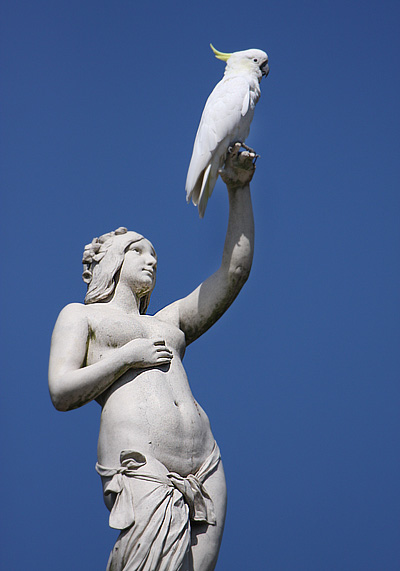
Sulphur-crested Cockatoo, Sydney, January 2009. Photo copyright Charlie Moores
The remaining parrots (the majority of the species) are grouped into the broad family Psittacidae. Here is where classifications have always been difficult. I’ll just outline those identified by the recent molecular work, rather than try to summarize the old classifications as well (but see the tree above if you want to see how the old tribes have been broken up).
Within Psittacidae, Wright et al. (2008) identify several large groups, plus a few species that aren’t closely related to the others. One of these outliers is the highly distinctive Pesquet’s Parrot Psittrichas fulgidas of New Guinea. This large black and red species has a featherless face and a fairly long bill, giving it a vulture-like appearance. Other outliers are the vasa parrots (Coracopsis), two large all-black species from Madagascar. The exact placement of Psittrichas and Coracopsis in the parrot tree isn’t fully resolved.
One large and well-recognized division of the parrots is the tribe Arini (or sometimes subfamily, Arinae). This tribe is composed of all of the New World species of parrot. Species in this tribe, perhaps more than any other in Psittacidae, are mostly green in coloration, but the exceptions are spectacular – just look at the macaws! The Arini have traditionally been divided into two lineages – one with long, pointed tails and the other with short, square tails. The long-tailed group includes the huge macaws (Ara, Cyanopsitta, Anodorhynchus, and others), and the medium-sized parakeets and conures (Aratinga, Pyrrhura, and others). The short-tailed group includes the diverse genus of Amazons (Amazona) as well as related smaller genera Pionus, Touit, Brotogeris, and others.

Scarlet Macaw Ara macao. Photo copyright Tim Ryan (From the Faraway, Nearby)
The Wright et al. phylogeny shows these two morphology groups to perhaps be a little less well defined; for example, the long-tailed Monk Parakeet Myiopsitta monachus is in with the short-tailed group, and the short-tailed Hawk-headed Parrot Deroptyus accipitrinus and the Pionites parrots are in the long-tailed group.
Perhaps the most interesting finding in Wright et al. is that the closest relatives of Arini are found within two African genera – Psittacus, which includes the well-known African Grey P. erithacus,and the related genus Poicephalus, including such species as the Senegal Parrot P. senegalus. This makes perfect biogeographic sense if the Arini diverged from the other parrots when South America split from Africa.
The remaining large groups of parrots identified by molecular phylogeny continue to jumble traditional taxonomies of Psittacidae. One group includes a variety of species from Asia and Australia:
- Eclectus rostratus, the Eclectus Parrot, known for its extreme gender dimorphism
- Alisterus, the King Parrots of Indonesia and Australia
- Micropsitta, the Pygmy Parrots, the world’s smallest parrots at less than 15 grams
- Psittacula, the distinctive ringed parakeets, including the Endangered Mauritian endemic the Echo Parakeet
- Prioniturus, the Racquet-tails of Indonesia and the Philippines

Male Echo Parakeet, Mauritius, Feb 2009. Photo copyright Charlie Moores
Another clade is comprised mostly of Australian species. Many of these share a common morphology of being small, colorful, long-tailed species. These include Neophema, Purpureicephalus and Psephotus. Also included in this group are the larger Shining Parrots (Prosopeia) of Fiji and Rosellas (Platycercus) of Australia.
The lovebirds (Agapornis) of Africa form a distinct group, along with the little Hanging Parrots (Loriculus) of Asia and the Guiabero (Bolbopsittacus) of the Philippines.
The final group includes the famous Budgerigar Melopsittacus undulatus of Australia, the two genera of Fig Parrots from New Guinea and Australia (Cyclopsitta, Psittaculirostris), and the lories.
The lories encompass several genera in Australasia, and have long been regarded as a distinctive group of parrots, sometimes even split as their own family Loriidae. The molecular work confirms the lories as a monophyletic group, but places them nested deep within all of the other parrots. The lories can be recognized as a distinct group due to their awesome color diversity and their feeding specialization on nectar and pollen. Lories have evolved a unique brushy tongue for this feeding lifestyle, and also have a weak crop compared to other parrots because they don’t have to store fruits and seeds.

Photo copyright World Parrot Trust
Where did parrots come from?
The fossil record offers us some fragmentary details about parrot evolutionary history, but the origin of parrots remains unsettled. The origins and timing of diversification of many modern bird and mammal orders has been a long debate. The earliest fossils of many of these orders occur in the Eocene, while modern molecular clock studies have been pushing the origin back into the Cretaceous, implying a large gap in the fossil record (Benton 1999).
Parrots are no exception – the oldest fossils confidently assignable to Psittaciformes are about 50 million years old. Recent phylogenetic work using molecular clocks puts the origin of parrots much earlier, in the Cretaceous period, approximately 80 million years ago (Wright et al. 2008).

Cretaceous parrot fossil. Source: Waterhouse 2006
A fossil lower jaw from the Cretaceous was described in 1998 as belonging to modern parrots – possibly a lory (Stidham 1998). That would have ended the origins controversy – we could simply have missed about 30 million years of the parrot fossil record. However, this fossil has been disputed by other paleontologists who believe that it is so fragmentary that it can’t be assigned to modern parrots over several other possibilities, including the beaked dinosaurs of the family Caenagnathidae (Dyke and Mayr 1999). Other authors point out that the fossil record, while far from complete, is sampled well enough to call such a large gap in the record unlikely (Benton 1999). Many remain highly skeptical of fragmentary Cretaceous remains and a Cretaceous origin of parrots until definitive fossils are found.

Caenagnathidae, source Wikipedia
Molecular clock work on the origins of modern bird orders, including parrots, suggest that the major radiations occurred in the Cretaceous. Molecular clocks work by using the mutation rates of the genetic loci being studied. If we assume that mutation rates are constant over time, than the accumulation of genetic differences between different species corresponds to the relative time since divergence (the loci have to be neutral, not under selection, so mutations accumulate randomly). Since we can’t know the real mutation rates of genes over millions of years, clocks work best when calibrated by either fossil data (we know a species is at least this old) or geographic events (this island has only existed for so long, so this species can’t be older than…).
Wright et al. (2008) included in their large parrot phylogeny a detailed analysis of the timing of parrot origin and diversification. The authors present two clock-based reconstructions based on the two major hypotheses about parrot origins. The first calibrates the clock to the Cretaceous, 82 million years ago. The second calibrates the clock to the oldest available fossils, 50 million years ago. Both are compared with major geologic events.

In the Cretaceous origin scenario, the New Zealand parrots (Nestoridae) originate around the time New Zealand split from the mainland, Cockatoos diverged from the remaining parrot lineages before the end of the Cretaceous, and most of the remaining broad parrot groups split up around 60 million years ago, when Australia began breaking off from Antarctica. With an Eocene origin, the timing of major parrot diversification occurs around 40 million years ago, after the beginning of the Gondwana breakup, and requires more overseas dispersal events for colonization of South America and Africa.
The authors conclude that the Cretaceous origin makes more biogeographic sense, although both models are plausible. There also remains the possibility that the genes studied don’t accumulate mutations in a clocklike fashion – i.e. mutation rates change over time. Critics of molecular clocks argue that this is a reason for distrusting clocks when clocks such a different answer than the fossil data, as seems to be the case with parrots and other major bird orders. It will still take definitive parrot fossils from the Cretaceous to settle the origins debate.
With the Cretaceous parrot fossil in dispute, the oldest fossils confidently to Psittaciformes occur in the Eocene, approximately 50 million years ago. Our understanding of these fossils is hampered by their mostly fragmentary nature, most being only wing and leg bones. These Eocene fossils from Europe and North America include birds classified as Psittaciformes but lacking in many of the unique features of modern parrots. One such is Psittacopes lepidus from Germany. This fossil is diagnosed as a parrot by the zygodactyl feet as well as several other skeletal characters of the arm and leg bones, but the big surprise is the beak – not parrot-like at all!

| Psittacpes lepidus Mayr& Daniels 1998 (holotype), a small psittaciform from the Middle Eocene, Messel, Germnay. Scale bar in mm. Source: Mayr 2005 |
Several other genera of parrot fossils are grouped into the extinct families Quercypsittidae and Pseudasturides, are considered to be in the same order as parrots (Psittaciformes) but outside of all living parrot families, due to the absence of the distinctive parrot bill in Psittacopes and the lack of certain skeletal features. These fossils seem to indicate that the parrot-like bill is indeed a unique, derived character of modern parrots, and other skeletal features, including the zygodactyl feet, are of older origin.

| Articulated skeletons of Pseudastur macrocephalus (Mayr 1998a) from the Middle Eocene of Messel, Germany. The arrows indicate the large processus supraorbitales. Scale bars are 10mm. Source: Mayr 2002 |
Fossils more closely related to modern parrots are also found in the Eocene as well as younger deposits. Waterhouse et al (2008) described a single humerus from Denmark as Mopsitta tanta, the oldest close relative of modern parrots at 54 million years old. The authors believe Mopsitta to be more closely related to modern parrots than to the other Psittaciforms present at the time, and may even be included in the extant family Psittacidae.
Fossils of parrots from genera still alive today occur as old as the Miocene (about 20 million years ago). These include a fossil from Wyoming in the genus Conuropsis (the genus of the extinct Carolina Parakeet) and a fossil of a Cacatua cockatoo from Australia, both from the Middle Miocene (about 15 million years ago), as well as Nandayus vorohuenseis (related to the extant Black-hooded Parakeet) from Argentina and a specimen of Melopsittacus undulatus (Budgerigar) from Australia, both from the Pliocene, less than five million years ago.
The presence of parrot relatives from the Eocene in Europe and North America presents several possible scenarios for the origin and evolution of parrots. They could represent the actual origins and ancestors of modern parrots. This would mean parrots evolved in the northern continents before dispersing and diversifying into the southern continents. Since the earliest parrot fossils in the southern continents come 30 million years after their origin in Europe, this view makes sense.
However, if Mopsitta is indeed a modern parrot and not one of their early relatives, then that means modern parrots co-existed with their relatives in Europe 50 million years ago, indicating an earlier evolution of Psittaciformes, consistent with the Cretaceous origin of the group. We don’t have enough data to know for sure. Everyone agrees on what is needed – more fossils!
Mayr (2002) and Waterhouse (2006) speculate on the evolutionary success of modern parrots (with more than 300 species, Psittacidae is among the largest of modern bird families). The major changes in morphology between the ancient parrot relatives, who lacked the parrot bill among other features, and modern parrots appear to mostly be related to feeding morphology. The zygodactyl feet present in the ancestral parrots changed further, perhaps to assist their present-day use in manipulating food. The parrot bill is used for cracking hard nuts. The wing morphology changes, with some modern parrots having a reduced furcula to accommodate a bigger crop. Modern parrots also have modifications that allow some amount of hovering flight to go after fruits.
Finally, there is the matter of intelligence. We can’t really know when parrots evolved their superior avian intellect from fossil data, but we can examine traits associated with the evolution of intelligence in parrots, corvids, apes, and others. These traits include innovative foraging strategies to cope with variability in food supply, which in parrots includes variably timed and distributed fruit crops. Other factors include being highly social, having a large relative brain size, long development, and unstable habitat (Emery 2006).
These factors paint a picture of the parrots as a highly successful, highly skilled, yet flexible and intelligent group of birds. Their unique morphologies are specializations for this lifestyle. They are both the product and the success of their evolutionary history, and deserve to be admired.
References
Much of the data and hypotheses not directly cited above are drawn from multiple sources – these review works and the references therein:
- Forshaw, Joseph M. Parrots of the World. 1973. Lansdowne Press.
- Juniper, Tony, and Mike Parr. Parrots: A guide to parrots of the world. 1998. Yale University Press
- Mayr G (2002) On the osteology and phylogenetic affinities of the Pseudasturidae – Lower Eocene stem-group representatives of parrots (Aves, Psittaciformes). Zoological Journal of the Linnean Society 136:715-729.
- Waterhouse DM (2006) Parrots in a nutshell: the fossil record of Psittaciformes (Aves). Historical Biology 18(2):223-234.
- Wright TF, Schirtzinger EE, Matsumoto T, Eberhard JR, Graves GR, Sanchez JJ, Capelli S, Muller H, Scharpegge J, Chambers GK, and Fleischer RC (2008) A multilocus molecular phylogeny of the parrots (Psittaciformes): support for a Gondwanan origin during the Cretaceous. Molecular Biology and Evolution 25(10):2141-2156
Other references mentioned
- Benton MJ (1999) Early origins of modern birds and mammals: molecules vs. morphology. BioEssays 21:1043-1051.
- Dyke GJ, Mayr G (1999) Did parrots exist in the Cretaceous period? Nature 399:317–318
- Emery NJ (2006) Cognitive ornithology: the evolution of avian intelligence. Philosophical Transactions of the Royal Society B 361:23-43.
- Hackett, S.J., Kimball, R.T., Reddy, S., Bowie, R.C., Braun, E.L., Braun, M.J., Chojnowski, J.L., Cox, W.A., Han, K., Harshman, J., Huddleston, C.J., Marks, B.D., Miglia, K.J., Moore, W.S., Sheldon, F.H., Steadman, D.W., Witt, C.C., Yuri, T. (2008). A Phylogenomic Study of Birds Reveals Their Evolutionary History. Science, 320 (5884), 1763-1768
- Mayr G (2005) The Paleogene fossil record of birds in Europe. Biol Rev. 80:515-542.
- McGraw KJ, Nogare MC (2005) Distribution of unique red feather pigments in parrots. Biology Letters 1:38-43.
- Stidham TA (1998) A lower jaw from a Cretaceous parrot. Nature 396:29-30.
- Waterhouse DM, Lindow BEK, Zelenkov NV and Dyke GJ (2008) Two new parrots (Psittaciformes) from the Lower Eocene Fur formation of Denmark. Paleontology 51 (3):575-582.






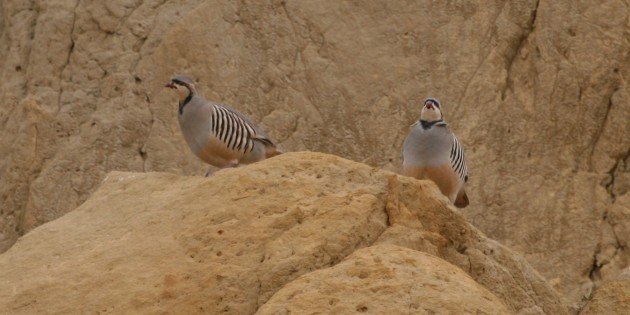
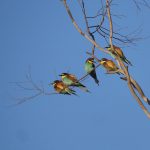
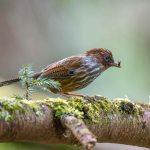

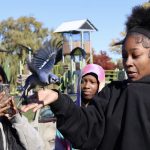

I think I’m smarter now. Thanks, Nick!
I don’t know if my work increases your critical thinking skills, but I certainly jam-packed it with information!
Great stuff! Thanks!
Wonderful!
thanks i have learned alot reading you page and feel a great deal confident and more knowladgeable about birds and this may help me with understanding my own a bit more cheers.
Simply Amazing!!!
Not only is this very interesting and well-written but it also definitely saved my biology grade 😉